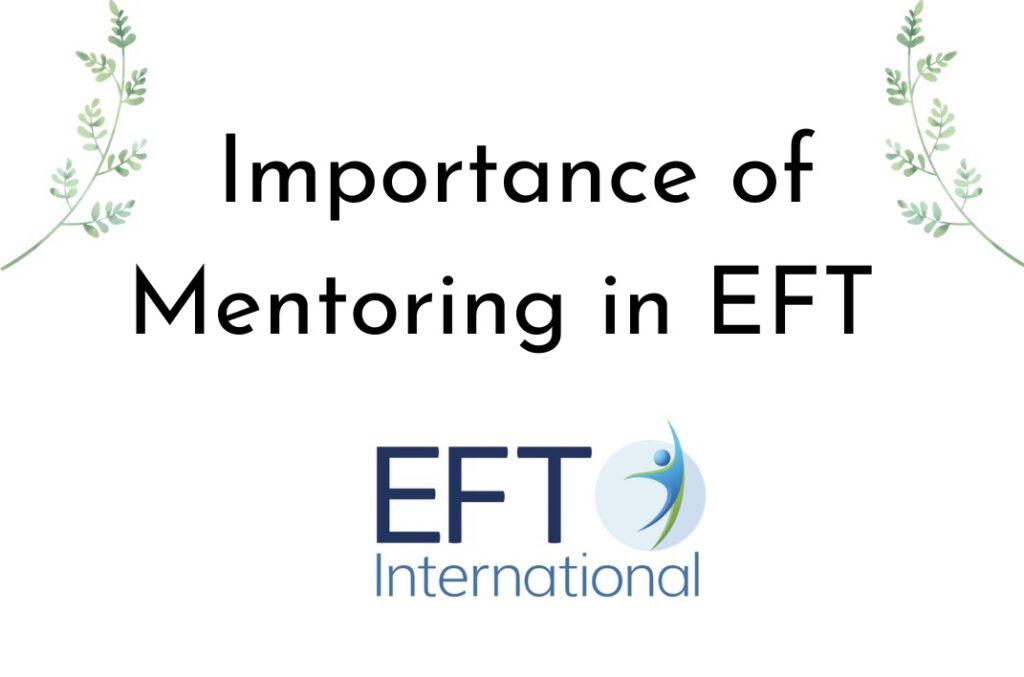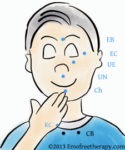Do we need to Undo our past to Heal?
Research shows that every time you remember a memory you basically edit it. “When you encounter a familiar experience, you are remembering the original memory at the same time, and the new experience somehow gets blended in…That is essentially what reconsolidation is” (Lee, n.d) It’s a known fact that memory is reconstructed over the years. When an event/incident takes place you think and feel in a certain way about it. It takes some time for the event to solidify in your brain. Once it solidifies and each time you retrieve the memory, meaning remember it, you basically alter it a little bit. However, it does not mean that the physical event did not take place. The way you think and feel about the event will change over the years – it would hurt less, you might not be as affected by it, but it does not become a false memory. It’s a reconsolidated and reconstructed memory.
Standard EFT and our memories
In standard EFT we neutralize the feelings towards the original event as the person remembers it. This helps as research indicates that “emotions are encoded along with memories in the brain, so connecting with the feeling, and healing it really helps change our perspective on what happened.”(N. Barron, 2013)
Movie technique/Tell the story technique or tearless trauma technique along with creative and gentle variations are used to tap on every aspect of that event, especially the emotional peaks, aka crescendos of the event. The significance of this process lies in the fact that whatever the person remembers, we tap on it. In this process of memory transformation, we don’t change the original story; we don’t substitute it with fantasy but work on the story as we remember it.
LeDoux (2005) says that the fewer times you use your memory, “the more pristine it is. The more you use it, the more you change it.” EFT requires re-telling the event while tapping on the various pieces/parts of that event. This leads to a decrease in the stress response tied with it and gradually we are able to nullify all the stressful feelings related to it. You can watch this video on a research where EFT led to reduction in the intensity of traumatic memories.
Example of using Standard EFT for memory transformation/neutralization of feelings: My client narrated in a session that when she was 8 years old, she was punched on her nose by her mother. She was in the back seat of her car and she said something and her mother punched her. When she recalled this event in the session, she could still feel the terror and shock of that moment. She had thought about it many times over the years and the memory was reconsolidated. She didn’t remember the exact details of the event; the date, where they were going, what she wore, what she had said etc, but she remembered being hit by her mother. With the help of EFT we worked on the aspects of ‘shock and terror’, by working primarily on what she remembered and gradually the feelings subsided, making her neutral towards the memory. We also used metaphors and inner child healing to release the pain and trauma from that memory.
EFT variations that end up disowning the story
Some variations of EFT use different ways of re-writing the story by “creating a happy ending” based on what you would have liked/wanted to happen (substituting the bad ending with a happy ending for a story). So if we worked on the “punching nose” event and used re-creation of the story, we would let the client choose a happy ending for her story and transform the memory into, for example, being touched gently on her cheeks by her mother – a fantasy. This will change how the client feels about the event but re-writing the story with a happy ending might make her uncomfortable as it is a lie, even though she has willingly re-created this childhood event in the session. She will have to say a lot of lies to herself to stick to the fantasy version of her story because the fact that she was physically abused throughout her childhood will not change and in order to change it, she might have to disown her story and re-create every memory that involved this abuse.
It’s true that we all perceive things in our own way but being punched by someone in the nose is a reality for that person and no matter how many different ways in which you want to see it, it remains the same. But yes, you can change how you feel about that memory. The memory of an event plays out in a certain way in the mind of the person. We tap on whatever we hold within ourselves. It’s our perspective, our understanding, our feelings about the event. But there are certain ‘unchangeable aspects’ of that memory that remain the same. For example, if someone’s relative died, then they died – it’s unchangeable. Similarly if someone is abused and would like to think that they were not, then it’s a lie. Suppose you were cut by a sharp knife and bleeding, re-creating this memory with a butter knife will not help at all! This distortion might help you in forgetting that you had a knife cut but you will be forgetting and losing out on what you can learn from it and get cut again by another knife.
Honouring Our Past
Our past guides us; we learn from our experiences. Our past can guide us in useful ways too. If we neutralise an upsetting traumatic memory, we can also learn or grow from it. We might learn that someone isn’t trustworthy, reliable and we need to set boundaries with that person, or create an emotional distance with that person. If we completely forget what happened by replacing all bad times with good endings, wouldn’t it be distorting our lived reality to the extent that we no longer know what happened? Someone with a history of psychotic episodes, using this kind of fantasy runs the risk of creating false memories that may have a deleterious long-term effects. We cannot undo what happened in our past. Physical reality and the psychological impact that happened cannot be undone and to heal we don’t need to undo it. We only need to process the memories, work through them, taking up each piece of the event and finally having left with a memory with no charge. The memory is there but it’s not upsetting you anymore.
We can honor our stories, learn from them, integrate them in our lives and heal.
Healing takes place when we accept whatever ending the story has without trying to convert it into an ending that suits us. “Disowning our story is not a healing move, being able to own it and accept it, while tough, is essential.”( N. Barron, 2013) Personally I prefer to work with changing ‘how I feel’ about a memory, what I remember happening in that memory instead of changing ‘what actually happened’ in that memory.
As a practitioner, I don’t encourage or practice changing the memory into a fantasy memory or forcing positivity onto my clients. These ways of working with a client, especially those with trauma history , can retraumatise them. I stick with what the person remembers. So if someone was hit by a person , and they tapped on it, they might say – “Yes I was hit by so and so, but it doesn’t affect me anymore”. They wouldn’t have to lie to themselves saying that they weren’t hit.
Conclusion:
As Practitioners we need to tread carefully while working on memories and inform the clients about the process and the effect on memories. In my opinion, standard evidence-based EFT is a trauma informed approach and is a natural way of healing, not forced. Also, in advanced EFT, inner child healing and parts work is used to bring healing to our wounded parts and younger selves.
Using EFT we can simply neutralize the feelings towards an event rather than substituting it with a fantasy. It’s a far safer option in my opinion.
This article is an updated version of the original article that was published on 9th Nov, 2013, on my second blog. You can read the original article here.
References:
Barron, N. Personal Communication. Nov 08 2013 http://energyandintention.com/
LeDoux, J. (2005). Synaptic self: How our brains become who we are. New York, NY: Penguin.
Lee, J (n.d) In Discover Magazine: How much of your memory is true, retrieved November 1st, 2013 from http://discovermagazine.com/2009/jul-aug/03-how-much-of-your-memory-is-true











